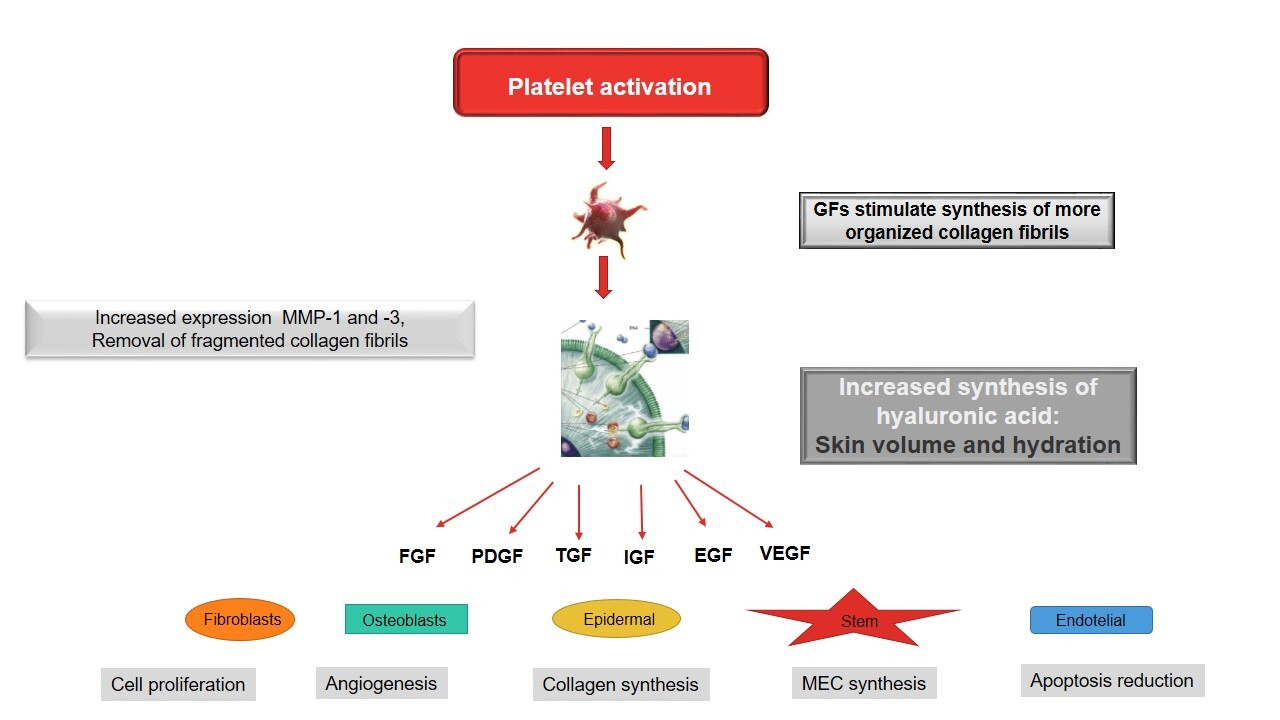Autologous platelet concentrates for facial rejuvenation
DOI:
https://doi.org/10.1590/1678-7757-2022-0020%20Keywords:
Platelet-rich plasma, Platelet-rich fibrin, Facial rejuvenation, Autologous platelet concentratesAbstract
Autologous platelet concentrates (APCs) are promising therapeutic agents in facial rejuvenation since they are a great source of cytokines, growth factors and other biologically active substances. Obtained from the patient’s blood, they have the advantages of reducing immunological reactions, making the procedure safer, well tolerated, with minimal adverse effects and lower cost. Currently, they are used for facial rejuvenation both in combination with microneedling and in mesotherapy techniques, as well as to treat facial acne scars, melasma and wounds after laser ablative treatments. This review summarizes current knowledge on the use of APCs, ranging from basic concepts related to their composition and mechanisms of action to up-to-date information on their clinical efficacy. Methodology: MEDLINE (PubMed) was searched from inception through 2021 for English language publications on APCs for facial rejuvenation. Results: A total of 100 files were found. Based on the available literature, APCs for skin rejuvenation are safe and well tolerated. The most studied product is the first-generation material, platelet-rich plasma (PRP). Conclusions: The results are in general favorable, but the quality of the studies is low. The second and third generation products, platelet-rich fibrin (PRF) and injectable platelet-rich fibrin (i-PRF), respectively, are easier to be obtained and, at least in vitro , seem to induce greater collagen production than PRP, especially under lower relative centrifugation forces, but to date only a few clinical trials evaluating these products exist. More high-quality trials with appropriate follow-up are necessary to provide adequate evidence that may help to improve the treatment regimens with APCs. Many aspects should be considered when designing clinical trials to evaluate APCs, such as the patients’ characteristics that best predict a favorable response, the optimal number of sessions and the interval between them, the characteristics of the studies and the development of better instruments to evaluate skin aging.
Downloads

Downloads
Published
Issue
Section
License
Copyright (c) 2022 Journal of Applied Oral Science

This work is licensed under a Creative Commons Attribution 4.0 International License.
Todo o conteúdo do periódico, exceto onde está identificado, está licenciado sob uma Licença Creative Commons do tipo atribuição CC-BY.

